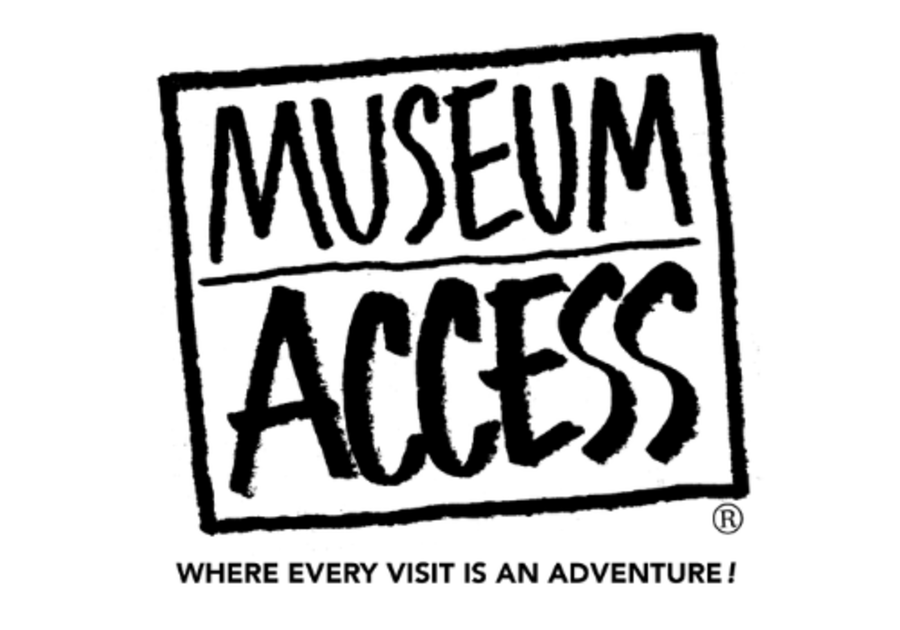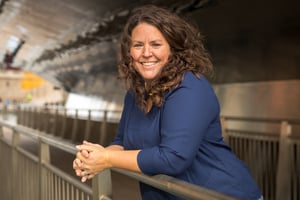Chicago is well-known for many things and our magnificent museums are one of the things that bring so many visitors to our city every year. Before I moved to Chicago I knew about the big museums - Shedd Aquarium, Adler Planetarium, Field Museum and Museum of Science & Industry, but since becoming a Chicagoan I have discovered so many more museums that are worth a visit (or two) right in the city!
I also recently discovered a show on PBS called Museum Access, hosted by Chicago native Leslie Mueller, which takes you behind the scenes of museums all around the country - including right here in our own backyard! What I love about this show is that Mueller gets to go places normally off-limits to visitors and shows us more about what goes on that most of us never even realized happened to bring an exhibit to life. Recently in town to film some episodes for her show, I was able to ask some questions of Ms. Mueller about hosting Museum Access and get some tips for getting the most out of a trip to a museum with the kids!
Q: I read that you’re from the Chicagoland area. As a child, what were some of your favorite local museum memories?
As a child, I remember looking forward to our school museum trips. I knew the museums were special places where dinosaurs and dolphins lived. I love each museum for different reasons. The Museum of Science and Industry for the coal mine ride and Colleen Moore’s dollhouse. The U-505 German submarine was still in the parking lot in those days, but it was extra exciting because of its sheer size. Looking at the planets at the Adler Planetarium was also special and, of course, the John G. Shedd aquarium for the amazing underwater life world of dolphins and whales. I might add that even as an adult each of these museums is still amazing!
Q: In season one, you visited the Shedd, the Adler, the Field, and MSI. Which of these museums held the most surprises for you? Which location did you personally learn the most from during your filming?
I learned so much every time I visit new museums but I was particularly surprised at the daily behind-the-scenes operations at the John G. Shedd Aquarium. You can imagine the care that’s required for overseeing over 32,000 aquatic animals every day. The kitchen crew arrives early in the morning after 750 lbs. of fresh seafood has been delivered to begin preparation for the daily feed feedings. The care to choose only the very best seafood is amazing. The attention to detail taking place in the veterinary hospital area is astonishing too. From physical exams to surgeries to basic daily monitoring of this unique population of varied species is nothing short of incredible!
Q: How long does it take to film one episode of Museum Access?
A typical school shoot takes about five hours on location. Some take longer because of their size. When we shot at the private museum within CIA headquarters in Langley, VA, it took longer due to many restrictions inherent with filming in a highly restricted area. As the host and executive producer of Museum Access, work begins weeks and months before the actual shoot. I find the pre-production planning is vital to a smooth day of shooting on location.
Q: Chicago has so many museums of varying sizes, is there a smaller or lesser-known museum you would like to feature on an upcoming episode?
Chicago has plenty of great smaller museums, two of which we will be featuring in Season 3 of our series, airing next year. One is the Federal Reserve Bank Money Museum. This small gem is filled with interactive exhibits showing the history of American currency, how the Federal Reserve protects against counterfeit currency every day, how the federal reserve system works and more.
Another great museum is the International Museum of Surgical Science. The building alone on Lake Shore Drive is worth the trip. Although there is much more to see at this jewel of the museum, we focused on the history of x-rays. Then we visited the neuro-radiology area at Northwestern Memorial Hospital to show our viewers just how far the field has come. It was fascinating!
Q: When you’re back in Chicago, what do you look forward to doing or seeing when you have a break from your filming and work schedule?
I hate to admit that my first stop when I visit Chicago is Garrett’s Popcorn at O’Hare. I still remember going to the original location on State Street with my dad as a child. I always check out local museums and I try to explore new neighborhoods. My last trip brought me to several art gallery openings west of the loop. I had not seen the area before so it was a real treat. I also use any excuse to take the water taxi from the museum campus along the lakefront in nice weather. There’s nothing like seeing the Chicago skyline from the water!
Q: What are your tips for a successful museum visit with kids?
I am a big believer in planning ahead by looking at the museum website. It’s the easiest way to see what might be going on the day of your visit, i.e. children’s workshops, lectures, demonstrations, and the like. It also gives you a chance to map out your visit. Young children will never last through every exhibit at the larger museums so focus on several and visit again later.
Take breaks during your visit. I suggest going for a snack or perhaps lunch. There is actually something called “museum fatigue” that even adults can get. If I am at the Art Institute, for example, I like to change what I am looking at by changing from paintings to sculptures. Sometimes just changing the space can re-energize you.
It’s fun to incorporate games with children. For example, ask them how many animals do you see in the paintings in this room? How many flowers do you see?
Can you count the dolphins in the tank? How many planets do you see hanging above our heads in this room? Simple questions about their surroundings keep them focused and inspired.
Remember to dress comfortably and bring a multi-pocket tote for any brochures or maps you may pick up at the front desk.
We know that learning doesn’t have to end after your museum visit. Continue the conversation on your way home by asking about their favorite part of the museum and why?
 |
Museum Access offers free, downloadable EDUCATIONAL FUN SHEETS on our website covering a variety of subjects that have fun facts and easy projects you can do at home with your children.
Every museum is a treasure trove of information and we all know the value of experiential learning. It increases effective learning, makes learning relatable and helps develop skills for lifelong learning. We love bringing these national treasures to the public television viewing audience nationwide through our series. We hope to educate viewers both young and old in an entertaining and inspirational way. We have a specially curated collection of S.T.E.A.M. related toys, and our brand new MUSEUM ACCESS CLASSROOM SERIES for parents, teachers, and homeschoolers to keep the learning going.
Keep up with Leslie's travels and behind-the-scenes fun facts by signing up for their monthly newsletter, the MUSEUM ACCESS INSIDER and catch up on previous episodes anytime on Amazon Video!
(Check your PBS schedule for local air times)
How many Chicago Museums Have You Visited?
Print off this handy checklist which includes FREE days for Illinois Residents:




